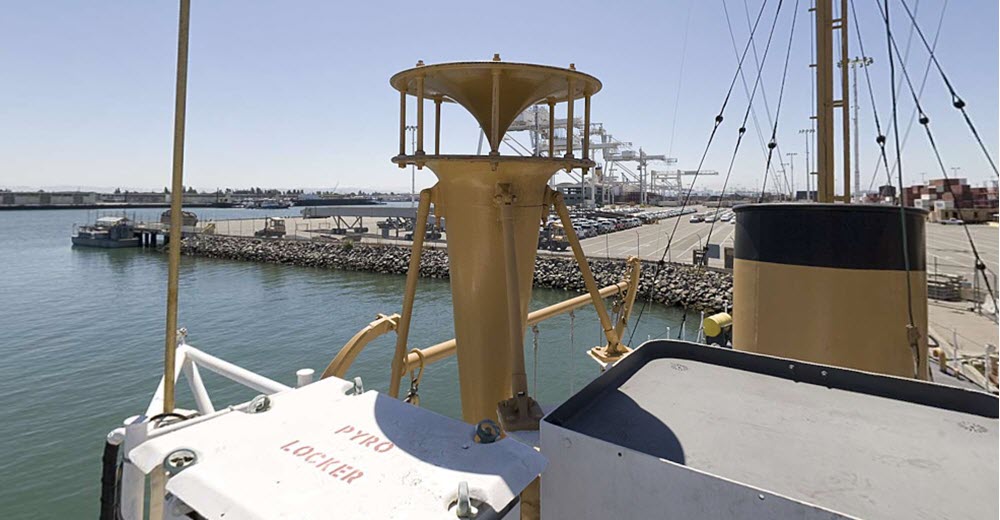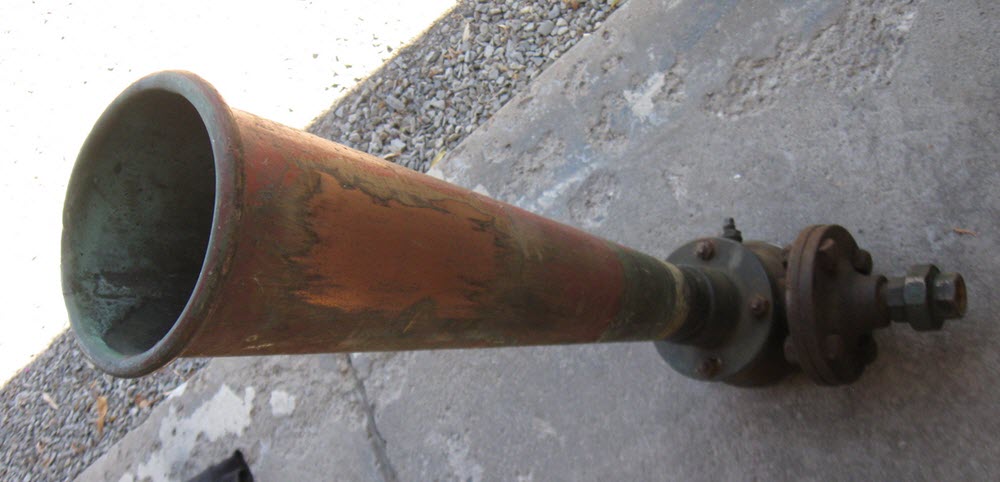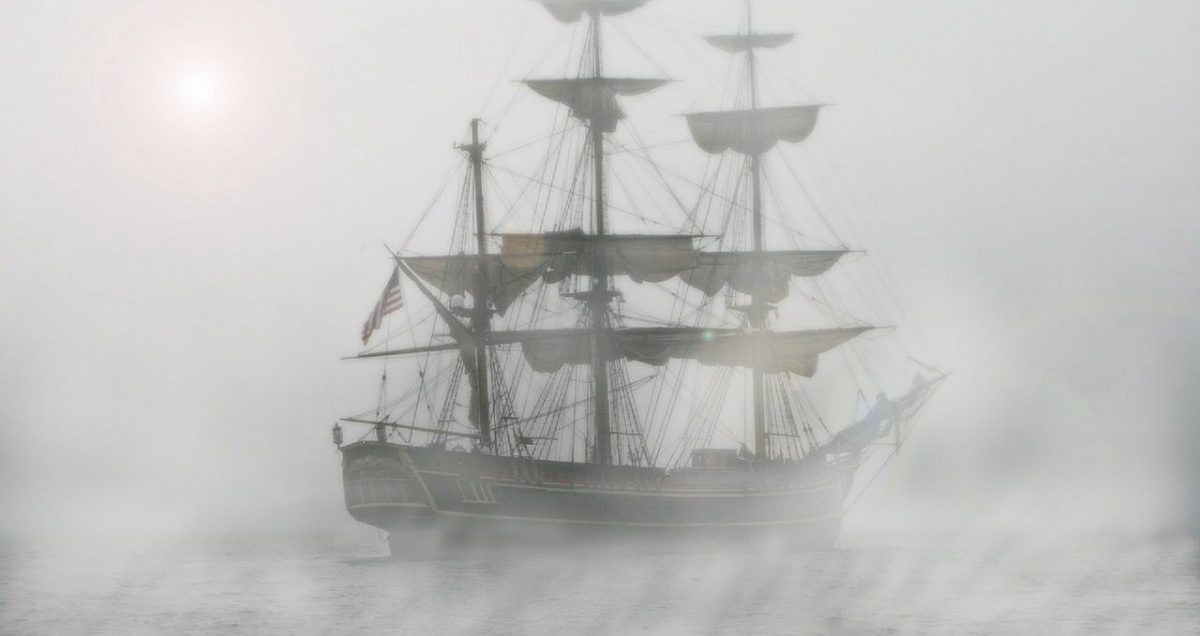The diaphone was invented to be an organ stop, but was later adapted to be used in foghorns. A diaphone can produce powerful low-frequency sounds that carry for a long distance.
The modified diaphones produced by the Diaphone Signal Co. in Canada from 1903 and onward were once found on numerous lighthouses and other warning stations world-wide, and highly praised for their efficiency and reliability.

As lighthouses were automated in the 1960s and 1970s, most diaphones were scrapped. In some cases, they were replaced by diaphragm horns that required less powerful compressors. The last diaphone of the famous F2T model in full-time operation in the United States was the one at Edgartown, a tourist destination on the island of Martha’s Vineyard.
Examples of lighthouses that still have functional (albeit not full-time used) diaphones:
- Low Head Lighthouse in Low Head, Tasmania, Australia. This lighthouse has a Type G diaphone; one of the largest diaphone models ever constructed. Its audible range is up to 20 miles (more than 32 km).
- Lindesnes Lighthouse at the southernmost tip of Norway. Fog Horn Day is celebrated here on the last Sunday of July each year.
- Portland Bill Lighthouse at Isle of Portland in the English Channel. This Type F diaphone was decommissioned in 1996, but restored in 2003.
- Grand Traverse Light at the tip of the Leelanau Peninsula in Lake Michigan, USA. This lighthouse sports a restored diaphone foghorn which is demonstrated throughout the year.
- Duluth South Breakwater Outer Light at the Duluth Ship Canal in Minnesota, USA. After a local campaign, the F-2-T (two-tone) diaphones at this lighthouse were reinstated and reactivated in 1995.
- East Brother Island Light in California, a lighthouse located at the entrance to San Pablo Bay from San Francisco Bay. This lighthouse used to have a steam fog signal, but it was converted to a compressor-driven diaphone during Willard Millers tenure as lighthouse keeper during the first half of the 20th century.
History of the diaphone
The diaphone was invented as an organ stop by the English musician Robert Hope-Jones (1859-1914). Hope-Jones diaphone was based on a piston with slots cut through its sides, perpendicular to its axis. This piston moved within a similarly slotted cylinder, which in turn was kept inside a reservoir of high-pressure air. When high-pressure air entered behind the piston, it pushed the piston forward. As the piston slots aligned with the cylinder slots, air passed into the piston – creating a sound and pushing he piston back to its original position. The cycle would then repeat, over and over again.

John Pell Northey
John Pell Northey, a business owner in Toronot, Canada, patented a modified version of Hope-Jones diaphone – one which could create a more powerful sound. Northey, who owned a company that manufactured pumps and gasoline engines, achieved this stronger sound by adding a secondary supply of compressed air to the diaphone, which meant that the piston was now powered during both its forward and its reverse strokes. The entire contraption was driven by a compressor.
In 1903, Northey founded the Diaphone Signal Co. and began producing a wide range of diaphones for various uses. The Type F model proved to be a very popular choice for lighthouses, as it could produce a tone of roughly 250 Hz. At the end of each note produced by Northey’s diaphones, there was a noticeable low-frequency “grunt”, caused by the deceleration of the piston. This low-frequency sound carried even farther than the main tone, so Northey modified the Type F to make it capable of sustaining the low-frequency “grunt” longer. This is how the now so familiar two-tone fog signal came into being. This version of the Type F was simply called Improved Type F or F2T. The improved (two-tone) version became a big hit in north America, while European lighthouses generally opted for the single-tone version.
